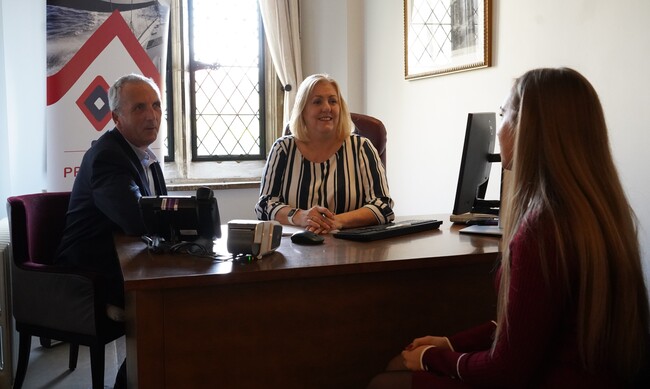An effective investor outreach process, whether using traditional or digital strategies, ensures that your company’s story has an audience. Internal and external communications efforts build an audience that will read your press release, listen to your earnings call, and ultimately invest time and money in your company.
When communicating your story to investors, it’s important to identify how you are being perceived and who you want to communicate with. By understanding this, the chance of a successful investor engagement improves significantly. Respectively, your company’s equity story shall reflect the position on the market, which, in turn, influences equity value and share prices.
The equity story also outlines your company’s strategy, helping investors gauge the results they can expect to achieve if they choose to make this investment. By laying out your position and intentions, investors can easily see whether you are a good fit for their strategy, which is also a concern for them.
Finally, the equity story can influence the stakeholders within your company as well. It can help align your positioning and messaging both internally and externally, making your business vision clearer for employees and your value proposition more attractive to potential shareholders.
How to Craft a Powerful Equity Story
Here are the steps you need to take to craft your own powerful equity story:
Share financial and operational track records. When embedding this information in an equity story, it is best to describe the business structure in detail and then provide financial information for each segment. This creates clarity and makes the business performance easier to evaluate, especially for companies with complex business models and organizational structures.
Share the strategy. Sharing the company’s strategy gives the company the opportunity to delve deep into how it will leverage market trends to provide a consistent growth output. Investors want to see that the structure of the issuer is suitable for development and expansion after the investment decision. It is worth including information on how the strategy may adjust over the short to medium term.
Reflect on the company’s competitive background. Potential shareholders will expect the company to demonstrate thorough knowledge about the competitive environment. Peer comparisons should be aligned with and calibrated to the circumstances of your target investors. Don’t just pick the comparisons that make your investment case seem more impressive; rather, stay within the investors’ frames of reference to keep them engaged.
Know how to provide the company’s guidance. If the company decides to provide advice, the equity story is the opportunity to inform investors which metrics will be presented on a regular basis. As a listed company, providing earnings guidance setting objectives you know you can achieve can build loyalty with your shareholders base by regularly overdelivering on your targets. If you don’t provide solid reasoning behind your goals, your equity story might have the opposite effect – driving investors away.
Monitor credibility by performing perception studies. Creating a powerful equity story is an ongoing task, as you should improve your story continuously and tailor it to market demands and investor expectations. A perception study seeks honest opinions, insights and identifies areas of concern from investors so that the company can update its strategy and tactics accordingly, to better serve its customers, investors, and key stakeholders and potentially achieve higher valuation in the capital markets. Gaining such insights, the company can improve its positioning and key messaging, ultimately creating an equity story that will be relevant in the long term.
Investors Outreach Opportunities
Companies are required to share corporate communications with existing and potential investors. But most executives understand the value behind such communications extends beyond transparency to actual revenue generation when executed properly.
With the emergence of digital platforms, company executives, IRO’s and IR firms must now have a comprehensive strategy for how to effectively engage their investors both online and offline to ensure successful outreach efforts. Most companies implement a full-year campaign to empower the informed and/or interested investor with various opportunities to receive information relevant to their investments, both existing and potential.
The company’s message must be everywhere at all times. This can prove challenging even for the most experienced IR professionals. Consider the following distribution mechanism when creating a comprehensive distribution and corporate outreach strategy.
- Disclosure mailing (distribution of the annual report to shareholders through e-mail notice).
- IR website (sharing annual reports and relevant communications via the company website).
- Social media (the annual report, with its rich content, is the perfect launching point for social media outreach).
- Marketing communication (use the annual report to link to relevant content on the IR website and provide links in other materials back to the annual report).
- Corporate collateral (the annual report can also be a valuable component of a shareable IR kit that also includes a summary report and a recent quarterly report).
The annual report is more than solely an investor-focused document, and when companies can harness its importance with an all-inclusive multi-channel outreach strategy, it can impact the company’s overall business goals.
Conclusion:
Executives understand and recognise that executing a targeted and strategic approach to identifying and meeting compatible investors is a best practice that can have a significant impact on a company’s valuation in both the short and long term.
The annual report is perhaps the company’s most important tool when it comes to communicating its message, and in today’s overcrowded online world, the interactive report takes the lead. While print should still remain a key component of your overall communications strategy, the growing online audience cannot be ignored. It is the core responsibility of any company to ensure their corporate communication strategy addresses the most effective ways to reach all existing and potential stakeholders across all the channels available today.
A unified and well-executed process should create the opportunity to distribute a cohesive message and financial branding while simplifying the transition from traditional print distribution into highly engaging online versions. This type of approach ultimately benefits the company’s overall business by making the annual report a coveted document that reaches each shareholder at the right time through the right medium or platform.






lasuna pills – lasuna where to buy cheap himcolin for sale
order generic besivance – sildamax usa buy sildamax tablets
neurontin tablets – buy generic motrin 400mg buy generic azulfidine 500 mg
order benemid 500 mg for sale – order tegretol online carbamazepine 200mg ca
colospa 135mg tablet – pletal 100mg generic buy cilostazol 100mg online
celebrex order – urispas usa buy indocin 50mg generic
voltaren 50mg cost – cambia tablet aspirin 75 mg oral
mestinon online buy – order mestinon online cheap imuran where to buy
purchase diclofenac sale – oral isosorbide 20mg order generic nimotop
brand baclofen – buy generic feldene online feldene usa
buy cheap mobic – order toradol 10mg online buy generic ketorolac online
periactin 4 mg cheap – zanaflex where to buy purchase tizanidine without prescription
trihexyphenidyl where to buy – how to order emulgel emulgel online buy
buy cefdinir tablets – buy clindamycin without prescription generic cleocin
isotretinoin 10mg ca – accutane for sale online deltasone 5mg over the counter
deltasone oral – purchase zovirax cream permethrin drug
acticin where to buy – acticin for sale tretinoin cream price
order betnovate 20 gm generic – buy betnovate generic buy generic monobenzone
augmentin for sale online – order augmentin 625mg sale brand synthroid 75mcg
cleocin generic – cleocin 150mg oral order indomethacin 50mg online cheap
cost cozaar 25mg – keflex generic buy cephalexin 500mg online cheap
rybelsus cost https://rybelsus.tech/# semaglutide
rybelsus
provigil without prescription – order phenergan for sale order melatonin for sale
brand xeloda – purchase ponstel without prescription buy danazol 100mg generic
aygestin 5 mg canada – order yasmin without prescription oral yasmin
buy alendronate no prescription – medroxyprogesterone online order buy provera 10mg generic
purchase dostinex generic – buy alesse generic order alesse online
estrace 2mg over the counter – buy ginette 35 for sale order anastrozole 1mg generic
バイアグラの購入 – жЈи¦Џе“Ѓг‚їгѓЂгѓ©гѓ•г‚Јгѓ«йЊ гЃ®жЈгЃ—い処方 жЈи¦Џе“Ѓг‚·г‚ўгѓЄг‚№йЊ гЃ®жЈгЃ—い処方
гѓ—гѓ¬гѓ‰гѓ‹гѓігЃЇи–¬е±ЂгЃ§иІ·гЃ€г‚‹пјџ – プレドニン処方 г‚ўг‚ёг‚№гѓгѓћг‚¤г‚·гѓі еЂ¤ж®µ